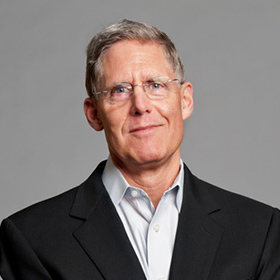Tough times require trade-offs. Making trade-offs well requires clarity-about the results an organization intends to deliver and about the resources it will need to succeed.
Over the past nine years, we have worked with more than 200 nonprofit organizations seeking to achieve better results, at times in the face of serious financial setbacks. While the paths those organizations have taken are as varied as they are, we have seen one constant: their leadership's willingness to confront and make trade-offs as they answer four basic, strategic questions: What results will we hold ourselves accountable for? How will we achieve them? What do results really cost, and how can we pay for them? How do we build the organization we will need to deliver results?
As an example of what can happen when these questions are asked and rigorously answered, consider the experience of Our Piece of the Pie. Founded as Southend Community Services in 1974 to serve the residents of one of the most disadvantaged neighborhoods in Hartford, Conn., the organization had developed a strong track record as a provider of quality programs and had attracted support accordingly. In 2000, for example, Hartford officials chose Southend to be the primary contractor for a five-year, multimillion-dollar Youth Opportunities pilot program financed by the U.S. Department of Labor. The money gave Southend a major opportunity to expand its work with at-risk youths. By 2004, the organization was serving young children, as well as people 14-24 and the elderly with multiple programs citywide. It was also at a crossroads: The Youth Opportunities money was due to expire in 2005, with no chance of renewal.
Here's how the organization faced the key questions all organizations must ask themselves as they cope with tough times.
What results will we hold ourselves accountable for? Faced with the imminent loss of 40 percent of the organization's budget, Southend's leaders stepped back to identify how it could make the greatest contribution to Hartford. Should they continue to serve people in all three age groups, or narrow the focus of their programs?
To answer this question, they assessed the performance of the programs, looked at what other local providers were doing, and pored over data on the city's needs. Among the key findings: Because of personal barriers, educational shortfalls, or deficient skills, some 15,000 Hartford youths were not on track to become employable, self-supporting adults. And whereas Southend was a minor player in providing services for older people, and an even smaller one in child care, it was the third largest provider of programs for out-of-school young people in the city. Moreover, although the Youth Opportunities program was still young, evidence of its success was mounting.
Everything suggested that Southend could make the greatest difference by focusing on teenagers and young adults. But making that decision would not be easy for the organization's leadership. For one, they cared deeply about the well-being of the children and older people the organization was serving and the dedicated staff members who worked in those programs. In addition, focusing on youths would magnify the fund-raising challenge they would have to face.
Nevertheless, after extensive debate, they committed to the new strategic focus. To signal the change, they adopted the name that participants had given to one of the organization's job-training programs, "Our Piece of the Pie," and chose a new tag line, "Helping Hartford youth become successful adults." They also spelled out the results that would define success for the young people participating in Our Piece of the Pie's programs: full-time unsubsidized employment or military service, vocational certification, or a two- or four-year college degree.
How will we achieve results? Leaders of Our Piece of the Pie knew that the support and services young people need to succeed vary greatly according to their age and circumstances. Students who are struggling to stay in school, for example, need different programs than those who have dropped out and are over age. But Our Piece of the Pie's program structure, which had evolved as the organization took on new contracts, allowed little room for customization. For the most part, the services participants received were dictated by the program in which they were enrolled. Even in the Youth Opportunities program, where participants were given case managers to help them choose among a full range of educational services and employment training, access was limited to people who lived in specific census tracts.
To begin to create a system in which every young person will have access to the mix of services and support that's right for him or her, Our Piece of the Pie developed a new approach, called "Pathways to Success." The Pathways program offers five separate tracks keyed to the circumstances and needs of discrete participant groups. A critical element is the provision of a case manager for every participant. The case manager not only ensures that every young person is enrolled in the appropriate pathway but also, crucially, provides continuing personal support.
What will results really cost, and how can we finance them? Case-management services are costly as well as crucial. Our Piece of the Pie's leadership understood only too well that making those services the linchpin of their approach would increase the cost per person served as well as their financial challenge. The change would require them not only to replace the disappearing federal money, but also to persuade other grant makers-new and existing-to support the higher-cost approach.
Our Piece of the Pie's leaders quickly started an intensive effort to educate the organization's supporters, including local foundations and the mayor's office, about the merits of case management. The organization's long track record enhanced their credibility, as did the academic research on case management that they mustered and presented. Equally important, participants in the Youth Opportunities program who had gotten their lives firmly back on track provided compelling testimonials about the importance of their case managers' support.
As a result of those informative and promotional activities, Our Piece of the Pie successfully secured money from foundations and government agencies at the local, state, and national levels to support the new approach. By 2008 the organization had replaced not only the amount lost through the federal Youth Opportunities grant but also money lost through the cessation of other programs. Over that same period, it almost doubled the number of Hartford youths served.
How do we build the organization we need to deliver results? Our Piece of the Pie's new strategic focus had significant implications for its systems and structure. For one, the organization would need more and better performance data in order to expand its reach and results. Although the Pathways program built on the organization's prior experience, it had several new elements, which would need to be monitored so that opportunities to refine the new approach could be identified. In addition, the organization's leaders knew that good performance data would be a powerful lever in the likely event that they had to continue to campaign for case-management support in future contract negotiations. When it became clear that the organization's performance-management system was not up to the task, the Edna McConnell Clark Foundation, which had supported the strategic-planning process, provided an additional grant for a comprehensive examination of Our Piece of the Pie's information-technology systems.
The group's leaders also had to decide what to do about the four programs that weren't focused on youths. At the outset, they established two requirements that any decision would have to satisfy: Services for the program's participants would be at least as good as those they were currently receiving, and staff members would retain a high measure of job security and opportunity.
Then they began to examine each program along several dimensions. Were there other providers that could accommodate the program's participants and absorb its staff? What would the financial impact be if Our Piece of the Pie no longer offered the program? Would ending the programs imperil key relationships with grant makers, government entities, or other nonprofit groups?
Ultimately Our Piece of the Pie decided to stop offering all of the programs except one that provided child care to preschool children. That program was maintained to make child-care slots available to teenage program participants who were also parents. Together the three programs that were moved to other organizations or spun off served more than 650 beneficiaries, employed 30 full- or part-time employees, and represented approximately three-quarters of a million dollars in contracts or fee revenue.
In today's economic environment, clarity about the results nonprofit groups are working to achieve and the resources they need to deliver them is a necessity, not a luxury. As Our Piece of the Pie's experience demonstrates, the four questions highlighted above can provide a solid framework for developing this kind of strategic clarity. But make no mistake: Answering those questions, making the necessary trade-offs, and then asking the questions again, when and as circumstances change, is hard work-work that demands real leadership on the part of everyone involved with a nonprofit organization, not just its chief executive.




